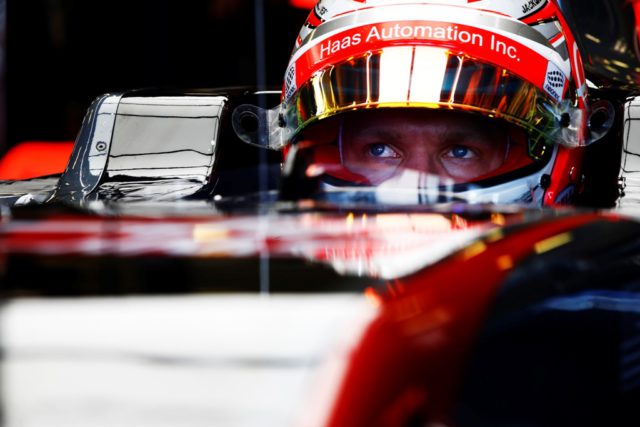Kevin Magnussen talks about the Haas’ performance in Australia and the expectations for the Chinese Grand prix.
Even though the outcome of the Australian Grand Prix produced a DNF, you appeared comfortable with the car and happy with its pace. How is the Haas VF-17 to drive and what makes you so optimistic going into the Chinese Grand Prix?
“It’s really good news that the car is as competitive as we had hoped for. There’s obviously no guarantee it’s going to be as competitive again. We need to work hard to get the most out of it and make it competitive again in China. The car was there, it was performing, it was just on my side I had a bit of a tough weekend. I didn’t get enough track time and there were too many issues with reliability that meant I didn’t have a good weekend. It’s positive, though, that the car is competitive.”
You were not alone in suffering a DNF at Australia, as six other drivers failed to finish. Reliability is important and it will come as the year progresses and more is learned about the racecar, but at this stage of the season, will you take speed and potential over reliability?
“Yes, I think so. The most important thing is to finish the race, otherwise you get nothing out of anything. It’s still very encouraging when you see the car is fast. I’d rather have to sort out reliability than sort out an underperforming car. Performance-wise, it’s there. We just need to make it run.”
There was a lot of talk about the start of this year’s season-opening Australian Grand Prix, specifically, how it would go since drivers need to release the clutch based on feel instead of with a program supplied by the team’s engineers. How did it go? Is getting it right akin to balancing on a razor blade?
“There wasn’t much difference with people getting it wrong or getting it right. Most people made a decent start. That was a bit surprising. I thought more people would get it wrong. It’s different, but it’s not really too bad. It’s made it a little bit more variable, but not too much. It’s still doable.”
Can you explain how you released the clutch last year and what you have to do this year to get a proper start and why it’s so challenging?
“Last year, you just had to release the clutch pedal to about halfway. It didn’t really matter if it was spot-on as long as you were sort of past 10 percent and under 90 percent – you were somewhere in that middle zone of where the clutch was performing. All you had to do was react quickly.”
What does it feel like to nail a start?
“The most important thing is to be at the limit of the grip of the rear tires, not to go past it. If you go past it, you get wheelspin. You’ll have a little bit of wheelspin initially, but then you need to catch that, and make sure you go just on the limit of wheelspin.”
What can happen if you botch the start, other than losing positions? Stalling the car? Inducing so much wheelspin you spin out?
“It’s more that you just lose positions, which is annoying.”
Starts have always been important, but are they even more so this year since the car’s aerodynamic advances have made them so fast and their wake so turbulent that it’s even more difficult to pass?
“I think some tracks are going to be easy enough to overtake. Melbourne has always been really tricky to overtake. It was perhaps even trickier than normal. Some other tracks are going to be easier than last year because our straight-line speed is a bit lower, there’s more drag, so the DRS is going to have a big effect, which means overtaking is going to be easier. In China, for example, and Bahrain, it’ll be interesting to see how it works out there, because I think it should still be possible to overtake.”
When you’re in the wake of another car, what happens to your car as opposed to when it’s in clean air?
“You lose a lot of grip. The downforce is obviously disturbed by the turbulence from the car running in front. The closer you get, the bigger the turbulence is from that car. You get more disturbance in the aerodynamics and you lose grip.”
What is your favorite part of the Shanghai International Circuit and why?
“I’d say turn one is pretty good fun. It’s a very unique corner where you turn in at very high speed and you end up at very low speed. It’s an incredibly long corner and pretty unique for that. The rest of the track is pretty straightforward.”
Is there a specific portion of the Shanghai International Circuit that is more challenging than other aspects of the track?
“I would say turn one is the only non-traditional element, the rest, as I said is pretty straightforward.”
Really looking forward to getting back in the car again. I am ready to push hard ??
— Kevin Magnussen (@KevinMagnussen) 2 April 2017

































